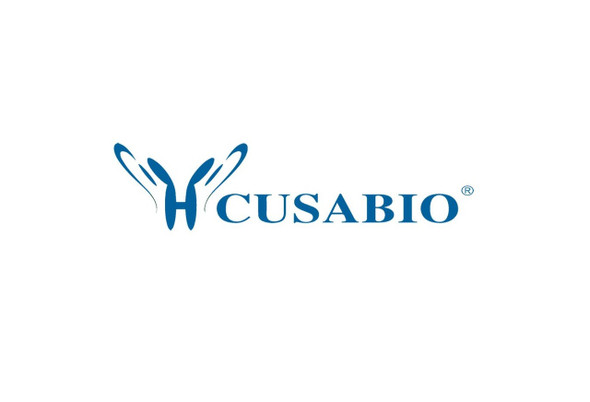Cusabio Human Recombinants
Recombinant Human DNA repair protein RAD51 homolog 4 (RAD51D) | CSB-EP019268HU
- SKU:
- CSB-EP019268HU
- Availability:
- 13 - 23 Working Days
Description
Recombinant Human DNA repair protein RAD51 homolog 4 (RAD51D) | CSB-EP019268HU | Cusabio
Alternative Name(s): R51H3 RAD51 homolog D RAD51-like protein 3 TRAD
Gene Names: RAD51L3
Research Areas: Epigenetics and Nuclear Signaling
Organism: Homo sapiens (Human)
AA Sequence: MGVLRVGLCPGLTEEMIQLLRSHRIKTVVDLVSADLEEVAQKCGLSYKALVALRRVLLAQFSAFPVNGADLYEELKTSTAILSTGIGSLDKLLDAGLYTGEVTEIVGGPGSGKTQVCLCMAANVAHGLQQNVLYVDSNGGLTASRLLQLLQAKTQDEEEQAEALRRIQVVHAFDIFQMLDVLQELRGTVAQQVTGSSGTVKVVVVDSVTAVVSPLLGGQQREGLALMMQLARELKTLARDLGMAVVVTNHITRDRDSGRLKPALGRSWSFVPSTRILLDTIEGAGASGGRRMACLAKSSRQPTGFQEMVDIGTWGTSEQSATLQGDQT
Source: E.coli
Tag Info: N-terminal GST-tagged
Expression Region: 1-328aa
Sequence Info: Full Length
MW: 62 kDa
Purity: Greater than 90% as determined by SDS-PAGE.
Relevance: Involved in the homologous recombination repair (HRR) pathway of double-stranded DNA breaks arising during DNA replication or induced by DNA-damaging agents. Bind to single-stranded DNA (ssDNA) and has DNA-dependent ATPase activity. Part of the Rad21 paralog protein complex BCDX2 which acts in the BRCA1-BRCA2-dependent HR pathway. Upon DNA damage, BCDX2 acts downstream of BRCA2 recruitment and upstream of RAD51 recruitment. BCDX2 binds predominantly to the intersection of the four duplex arms of the Holliday junction and to junction of replication forks. The BCDX2 complex was originally reported to bind single-stranded DNA, single-stranded gaps in duplex DNA and specifically to nicks in duplex DNA. Involved in telomere maintenance. The BCDX2 subcomplex XRCC2:RAD51D can stimulate Holliday junction resolution by BLM.
Reference: "Multiple alternative transcripts of the human homologue of the mouse TRAD/R51H3/RAD51D gene, a member of the recA/RAD51 gene family." Kawabata M., Saeki K. Biochem. Biophys. Res. Commun. 257:156-162(1999)
Storage: The shelf life is related to many factors, storage state, buffer ingredients, storage temperature and the stability of the protein itself. Generally, the shelf life of liquid form is 6 months at -20?/-80?. The shelf life of lyophilized form is 12 months at -20?/-80?.
Notes: Repeated freezing and thawing is not recommended. Store working aliquots at 4? for up to one week.
Function: Involved in the homologous recombination repair (HRR) pathway of double-stranded DNA breaks arising during DNA replication or induced by DNA-damaging agents. Bind to single-stranded DNA (ssDNA) and has DNA-dependent ATPase activity. Part of the Rad21 paralog protein complex BCDX2 which acts in the BRCA1-BRCA2-dependent HR pathway. Upon DNA damage, BCDX2 acts downstream of BRCA2 recruitment and upstream of RAD51 recruitment. BCDX2 binds predominantly to the intersection of the four duplex arms of the Holliday junction and to junction of replication forks. The BCDX2 complex was originally reported to bind single-stranded DNA, single-stranded gaps in duplex DNA and specifically to nicks in duplex DNA. Involved in telomere maintenance. The BCDX2 subcomplex XRCC2
Involvement in disease: Breast-ovarian cancer, familial, 4 (BROVCA4)
Subcellular Location: Nucleus, Cytoplasm, cytoskeleton, microtubule organizing center, centrosome, Chromosome, telomere
Protein Families: RecA family, RAD51 subfamily
Tissue Specificity: Expressed in colon, prostate, spleen, testis, ovary, thymus and small intestine. Weakly expressed in leukocytes.
Paythway:
Form: Liquid or Lyophilized powder
Buffer: If the delivery form is liquid, the default storage buffer is Tris/PBS-based buffer, 5%-50% glycerol. If the delivery form is lyophilized powder, the buffer before lyophilization is Tris/PBS-based buffer, 6% Trehalose, pH 8.0.
Reconstitution: We recommend that this vial be briefly centrifuged prior to opening to bring the contents to the bottom. Please reconstitute protein in deionized sterile water to a concentration of 0.1-1.0 mg/mL.We recommend to add 5-50% of glycerol (final concentration) and aliquot for long-term storage at -20?/-80?. Our default final concentration of glycerol is 50%. Customers could use it as reference.
Uniprot ID: O75771
HGNC Database Link: HGNC
UniGene Database Link: UniGene
KEGG Database Link: KEGG
STRING Database Link: STRING
OMIM Database Link: OMIM









